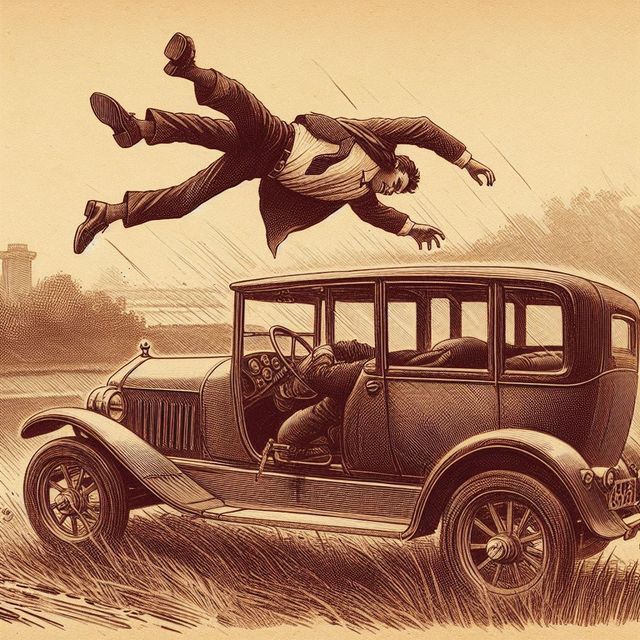-
Vijay Fafat
- Published on
Pearson was kidnapped by some gang members and was being taken in a car to be executed. He had the presence of mind to keep a count of a particular sound in the car and once he escaped, it was a relatively easy way for the police to catch the gangsters. As the spoiler ahead recounts:
“Sure,” said Pearson. “ I got the idea as soon as I heard it. Count the number of times that loose chain slapped the fender between each turn, and you’d have the distance the car went with me blindfolded in it. So I did. “We went fifteen hundred slaps north from the electric bread sign, eight hundred and twelve to the left, sixteen hundred and fifty-four to the right. But on the last turn I stopped us at fourteen hundred before we gave our hand away. That left two hundred and fifty four more turns of the wheel. Thirty-two inches wheel-diameter, times 3.141, or about three and a seventh. is the number of inches the car travels with each wheel turn. Multiply ’em out and you get four tenths of a mile —which was the distance ahead of us to Golden’s hang-out.”
Ames shook his head.
“God help the crooks in this burg if you ever get past mathematics and start using algebra on them!” he said.
Further Commentary:
Alex Kasman had asked me the following question:
Can you argue for the inclusion of this story despite my usual rule that I do not generally include elementary mathematics? (As you may recall, I’ve arbitrarily drawn the line at college level mathematics for mathematical content — or characters who are professional mathematicians.)
Here are my 3 reasons for considering this a work of mathfiction:
-
The story’s ending hinges entirely on this mathematical calculation. Without it, you don’t have much left. That, to me, is a hallmark of mathfiction.
-
I found it to be a reasonably nice plot device. Not too strained to shoe-horn a square into jam-bottle. The fact that a non-mathematician is able to use some elementary concept in a life situation brings a smile (I am reminded of so long ago, when one of my tuition student’s mother asked me why her MBA-studying daughter needed to know all that math and how it could possibly help her in the grocery store or while traveling, say…)
-
The math, though at an elementary level, is certainly much more solid and tangible and more legitimately used than the hand-waving fourth dimension that is conjured in many stories which we do include in mathfiction.
Given that this was in 1936, I think it was a good effort (it would not count much in a 2021 submission)
